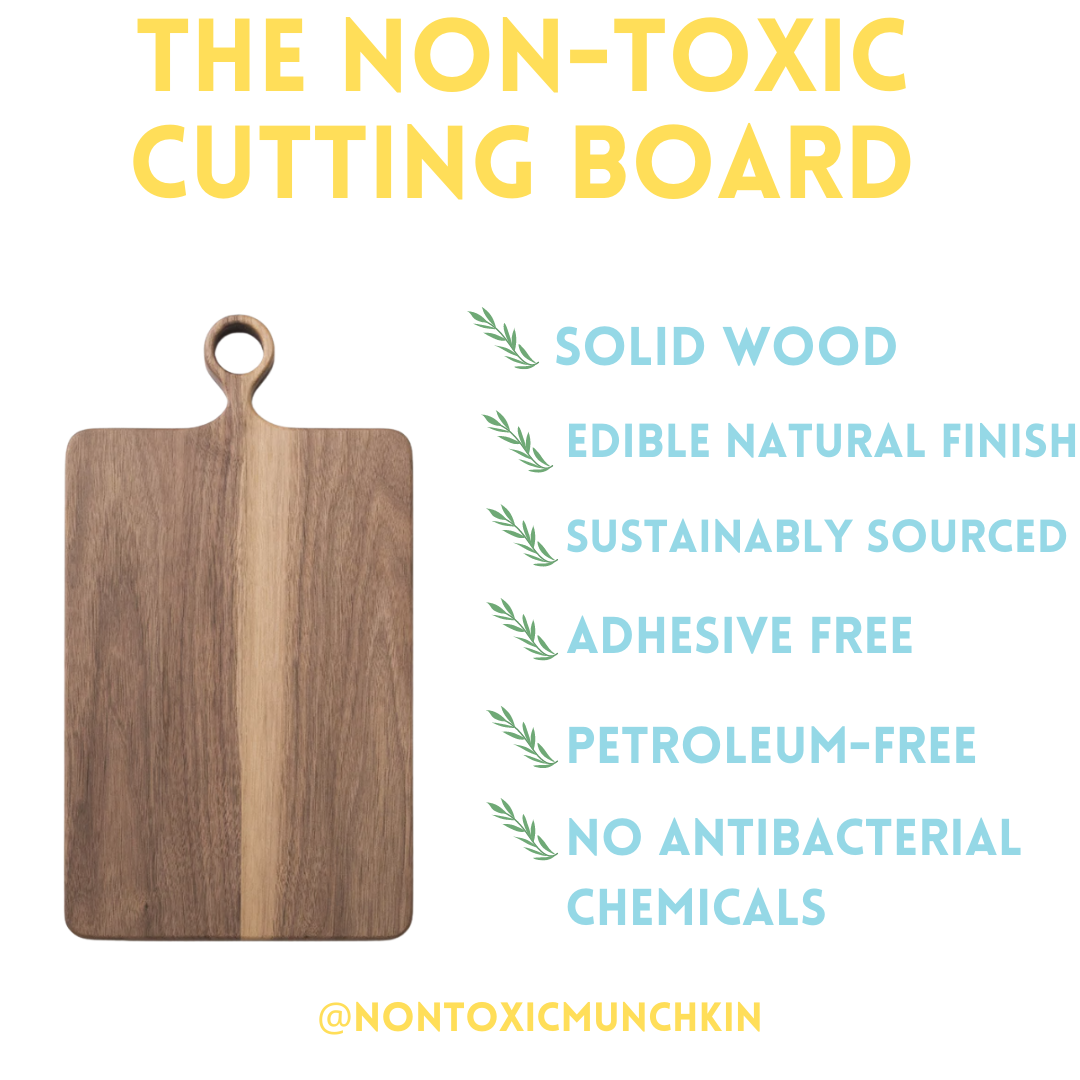Choosing a 'non-toxic' Cutting Board
Whatever it is, the way you tell your story online can make all the difference.
Should you be worried about potential toxins in your cutting board?
While it is definitely not my first concern of toxin exposure in the kitchen, it can be a source of some toxin exposure ; after all you are cutting food on them which you will later consume. So lets dive in and talk about what to avoid and what to look for, instead, so that when its time to replace your cutting board you can replace it with 'non-toxic ' one instead!
Here is what you want to avoid and why:
1. Plastic
- degrades overtime due to use, which leaves grooves where germs and bacteria can settle
- degrades over time due to use, allowing tiny pieces of plastic to migrate into your food
- often contain (almost always) antibacterial chemicals. These are often labelled with "Antibacterial” or “Prevents Odors” Antibacterial chemicals used, Microban and Triclosan are endocrine disruptors. Additionally, overuse of antibacteria chemicals can lead to antibiotic-resistant bacteria.
2. Bamboo:
- most are made of pieces of bamboo glued together
- The adhesives used are usually melamine-formaldehyde resins which can be a source of exposure to, among other chemicals, formaldehyde.
- bamboo is naturally hard and can thus dull your knives
bamboo cutting board almost always use mineral oil. Mineral oil is a by-product of petroleum. and not something you want to be ingesting. Food safe mineral oil is food safe, but its still a petroleum bu product- I prefer to opt out if possible
I have heard of companies that claim they use formaldehyde free adhesives - I would still be wary as adhesives are still required.
3. Epicurean wood fiber cutting boards
These are thin wood sheets glued together with... formaldehyde containing resins.
4. Composite wood (pieces of wood glued together)
- adhesives often contain formaldehyde and other additives
- often finishes with mineral oil
BETTER
glass and marble
- they dont require antibacteria finishes nor adhesives.
- however: the down side is that they will make your knifes blade's dull
BEST
The ideal material for a cutting board?
Hands down the winner is solid hard wood
- with proper maintenance and care they can last many many years
- Only use solid wood if you choose solid wood you dont have to worry about glues , nor other chemicals being used to manufacture the material
- wood is naturally antibacterial (but, yeah, you still have to wash it after use)
- best woods I would say are maple and walnut. Maple is slightly harder than walnut. Both should be oiled every month or so for optimal performance and lifespan
- note: always ask what is used to seal or treat the wood. Look for wooden cutting boards that use edible safe finishes like:
Beeswax
Carnauba Wax
Coconut Oil
MCT Oil
Linseed Oil (from flaxseeds)*
Walnut Oil
Avoid finishes like:
No Lacquers
No Petroleum-Based Mineral Oil—even if food grade
What if a solid wood cutting board is not in your budget?
Ok, no worries, your next best options are:
1. glass (but this could be damaging to your knifes
2. wood cutting board made with pieces of wood glued together BUT that can verify they use formadlehyde free and food grade adhesives and do not use mineral oils for finish or a solid wood cutting oil treated with food grade mineral oil BUT use a non mineral oil sealer at home…..
Companies I recommend
Schoolhouse Walnut Cutting Board- uses beeswax and sunflower oil polish for protection
$66.30
2. Palumba
Material: Cherry Wood
Finish: Three BEEautiful Bees All Natural Beeswax Polish
3. Virgina Boys
They have various models and styles of cutting boards but all are made with in the USA with certified sustainably grown walnut wood and Every purchase plants a tree. The downside is that they are not one solid piece of wood they do have some glue….
Prices start at $50
Walnut Wood Cutting Boards - Reversible with Juice Groove (Walnut, 8x12)
sources
https://www.sciencedirect.com/topics/chemical-engineering/phenolic-resins

